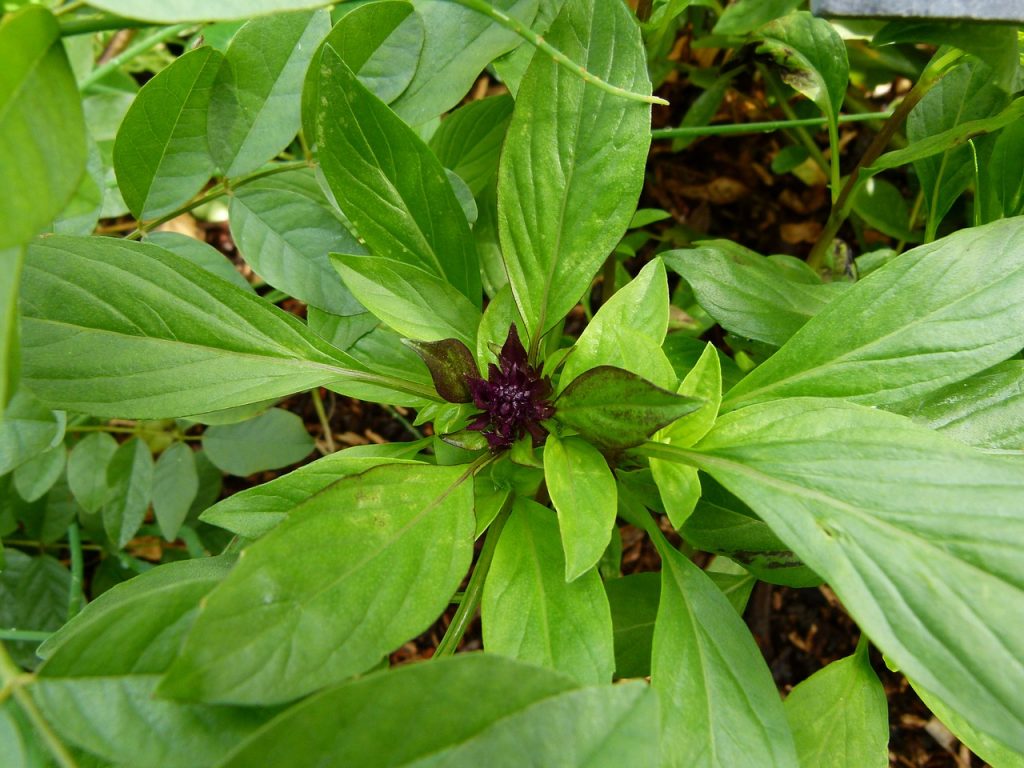Thai Holy Basil, a variety of the Ocimum genus in the Lamiaceae family, is native to Thailand and other countries in Southeast Asia. In Thai cuisine, it is used as an herb for many dishes including soups and stir-fries. The most notable dish that Thai holy basil is added to is Tom Yum soup which gives it its distinctive flavor. This article will tell you about thai basil, Thai basil benefits, and side effects as well as how thais use thai basil in cooking their favorite dishes!
What is Thai Holy Basil?
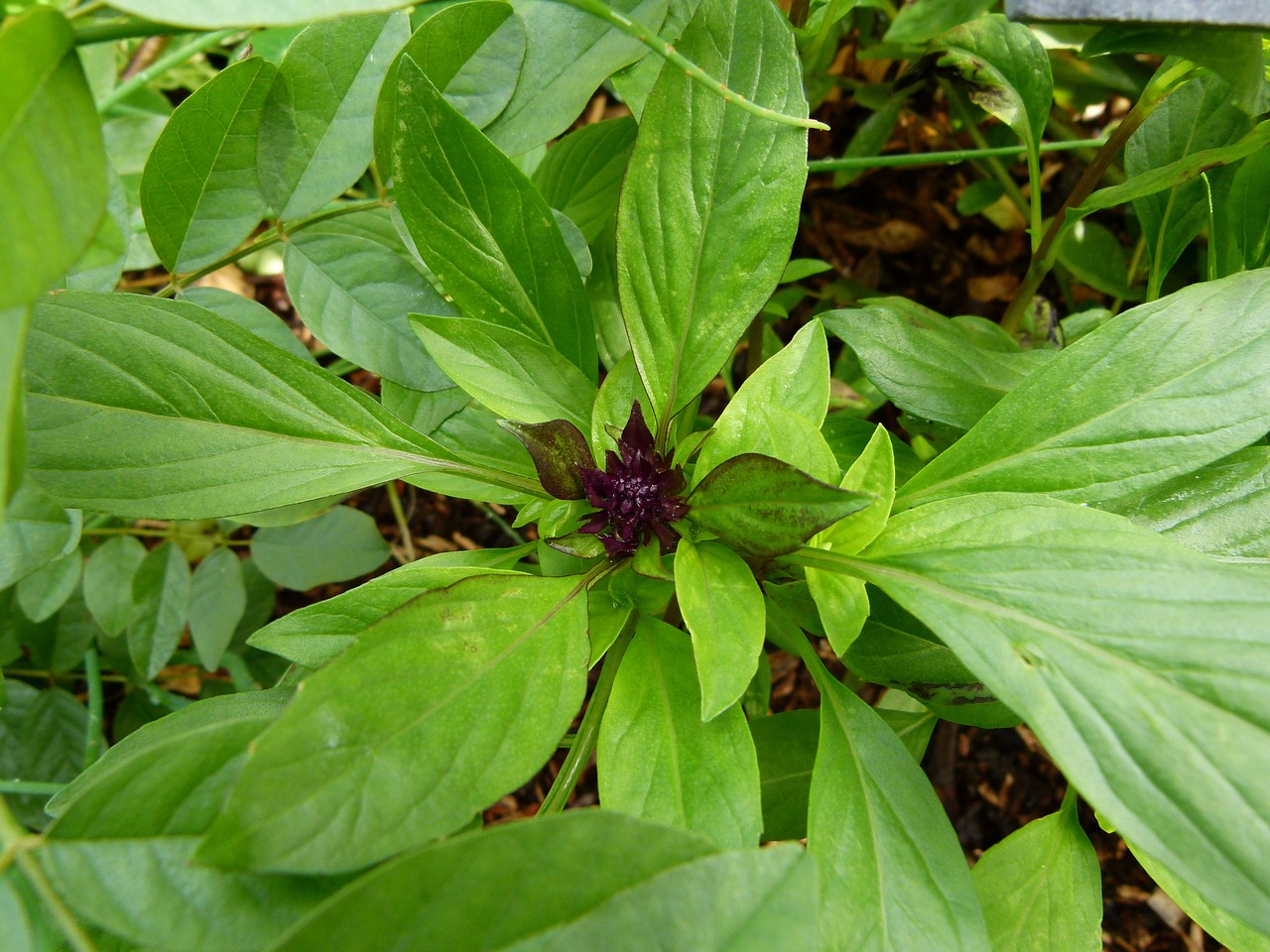
Thai Holy Basil is a variety of the Ocimum genus in the Lamiaceae family. Thai basil is a tropical plant and belongs to the basil plant family that includes Italian basil (Genovese basil) or sweet basil, lemon basil, Indian Tulsi. Thai basil is a tender perennial but is typically grown as an annual.
Thai basil originated from Thailand and other countries in Southeast Asia, such as Vietnam, Laos, Cambodia, and India, and is also called holy basil. In Thailand, it has been used for centuries to flavor dishes including soups and stir-fries, most notably Tom Yum soup which gives it its distinctive taste.
In Thailand, thai basil leaves are often eaten raw because this increases the active properties found within thai basil that help maintains good health by fighting free radicals (an unstable molecule with unpaired electrons).
Benefits of Thai Holy Basil
Many thai basil benefits are known for preventing diseases, such as cancer and diabetes.
Some thai basil benefits include lowering blood pressure, reducing blood sugar, reducing stress, reducing inflammation of the gut lining which is common in Crohn’s disease patients (a type of inflammatory bowel disorder), and aiding bone mass development in children.
Thai Holy Basil also contains antioxidants that help to fight free radicals thereby helping maintain good health through fighting off many illnesses!
The most well-known thai basil benefit is being an antibiotic with a wide variety of medicinal purposes from stomach aches to skin problems due to its antioxidant properties!
List of Benefits
- Antioxidants
- Anti-cancer properties
- Anti-viral properties
- Anti-bacterial properties
- Anti-fungal properties
- Reduce blood pressure
- Reduce blood sugar
- Reduce stress
Side Effects of Thai Holy Basil
Some thai holy basil side effects include an increase in bleeding during surgery, increased risk of bruising, and heart arrhythmia.
List of side effects
- Increased risk of bruising
- Increased bleeding during surgery
- Heart arrhythmia
Uses of Thai Holy Basil in Asian Cuisine
Thai basil is commonly used as an herb in thai dishes.
In Thailand, thais often consume raw thai holy basil with a variety of dishes, such as Tom Yum Soup (also known as “hot and sour soup”) or Pad Thai to increase the active properties found within it that help maintains good health.
Tom Yum Soup Recipe
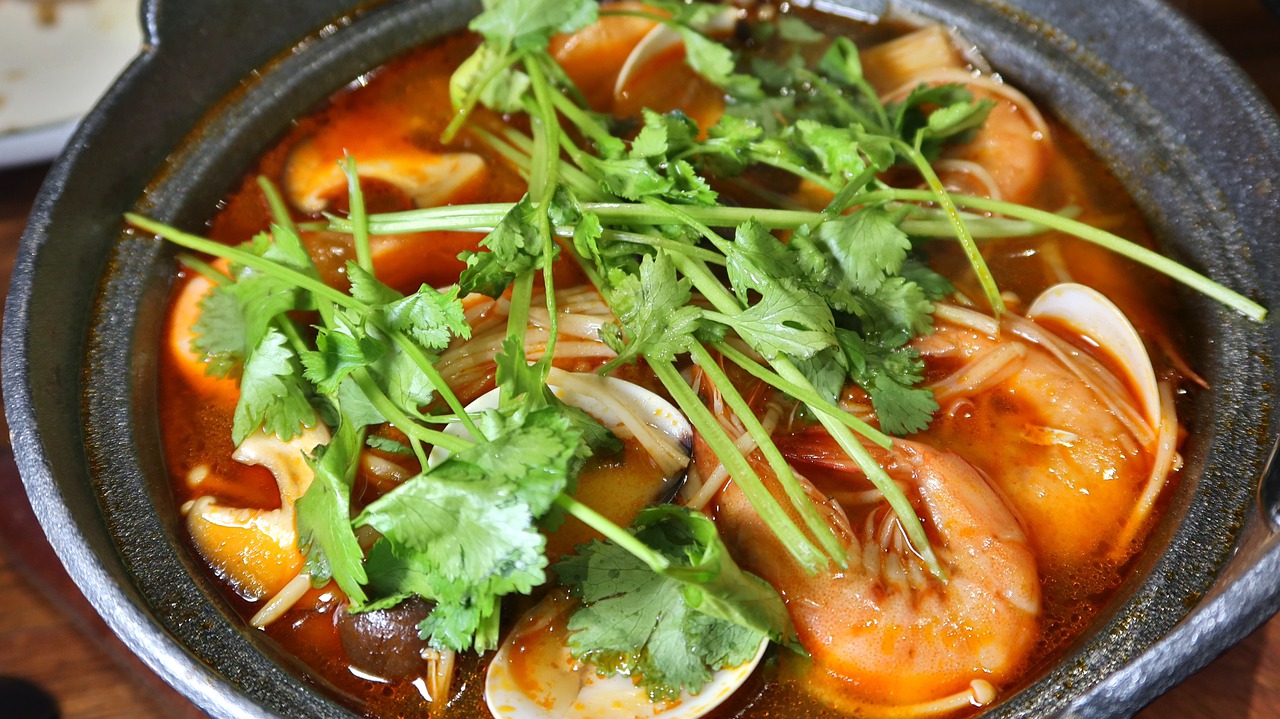
- Peel and thinly slice the ginger root.
- Grind together dried holy basil leaves with a mortar and pestle or using a spice grinder to form an aromatic paste (approximately one tablespoon).
- Add this paste into three cups of boiling water for two minutes before adding fish sauce and tamarind juice to taste along with thai basil sprigs, lemongrass stalks, lime wedges, or limes…and some salt if desired! Enjoy!
Green Curry Recipes
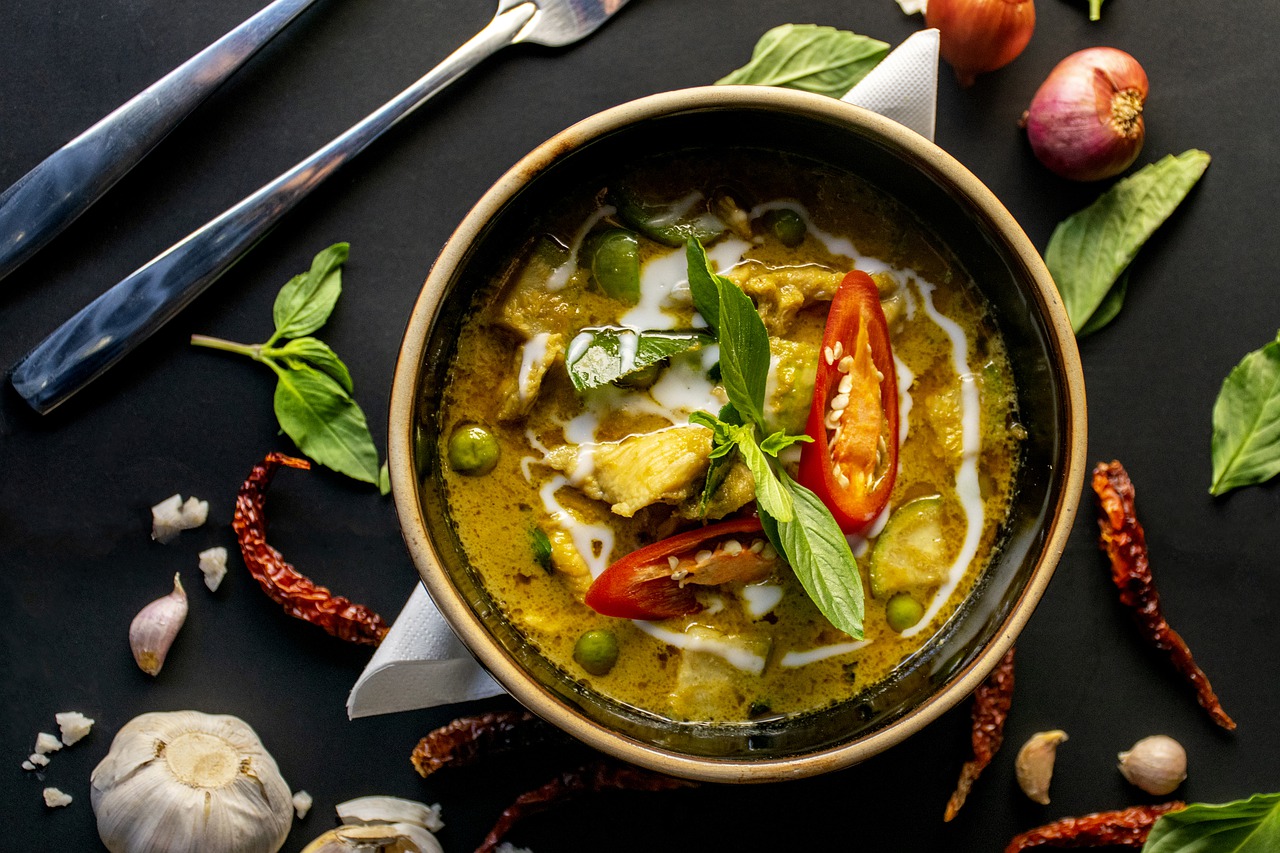
- Cut thai basil leaves into small pieces.
- Add thai basil to green curry paste in a mortar and pestle, or blend thai basil with the other ingredients of your choice for green curry sauce, such as garlic cloves, cumin seeds, coriander seed pods, and black peppercorns before adding it to coconut milk.
Tom Kha Gai Recipe
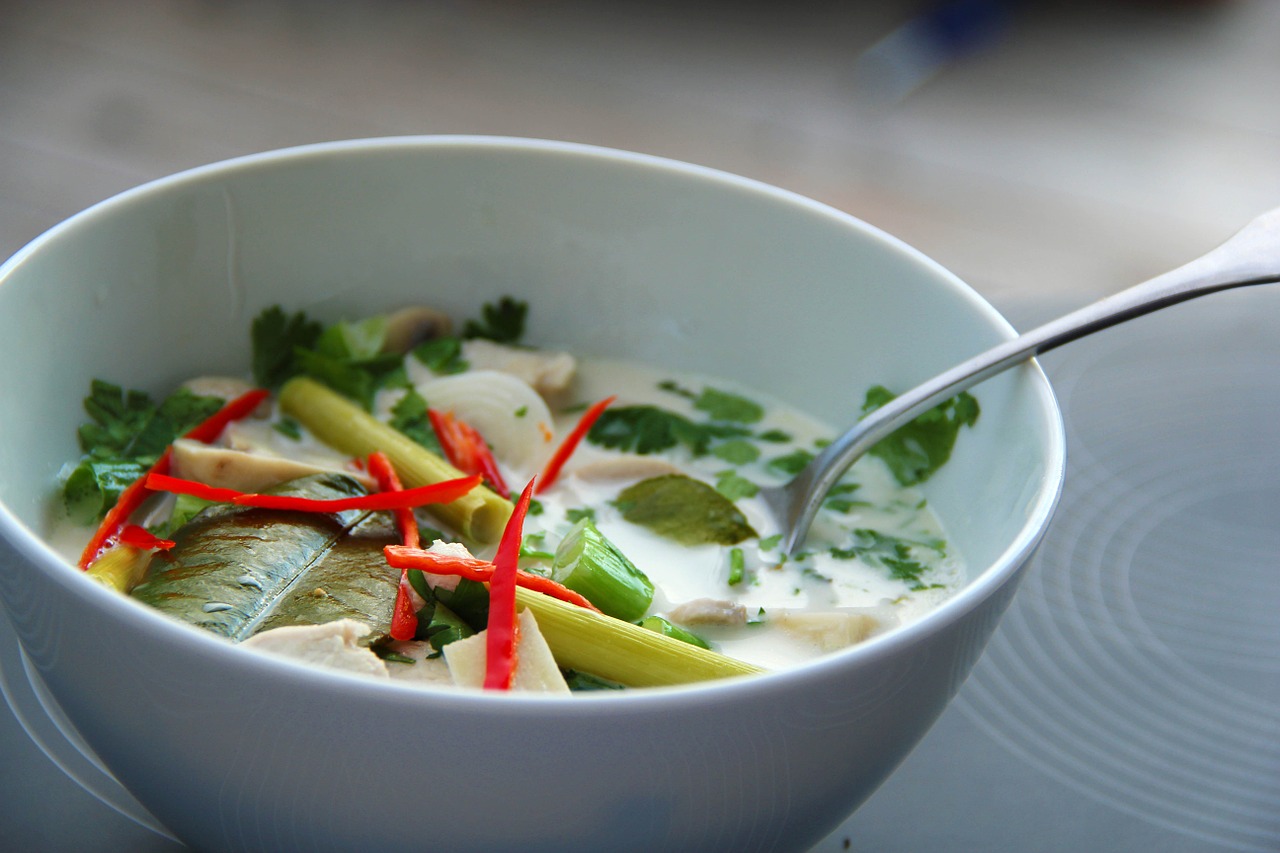
In Thailand, this thai dish is usually served with fried rice noodles as well as vegetables such as mushrooms, okra, or tomatoes which are cooked in a pot of broth over high heat until they turn golden brown (the longer you cook them the softer they will be). You can add other green herbs like Thai Basil into your Tom Kha Gai recipe for an extra kick too!
- Peel and thinly slice the ginger root.
- Add thai basil leaves to boiling water before adding chicken stock, coconut milk, sweetened condensed milk, or thai basil paste and some salt if desired!
Panaeng Curry Recipes
- Add basil leaves to boiling water before adding thai red curry paste, coconut milk, and some salt if desired!
Pad Woon Sen Recipe
- Cut basil leaves into small pieces.
- Add thai basil to the Pad Thai Noodle recipe for an extra kick or use the thais dish as a dipping sauce with tofu, shrimp, or vegetables such as carrots, broccoli, and mushrooms.
Thaal Thoeng Sauce Recipe
- Add basil leaf to boiling water before adding thai red curry paste, coconut milk, and some salt if desired!
Pad Thai Recipe
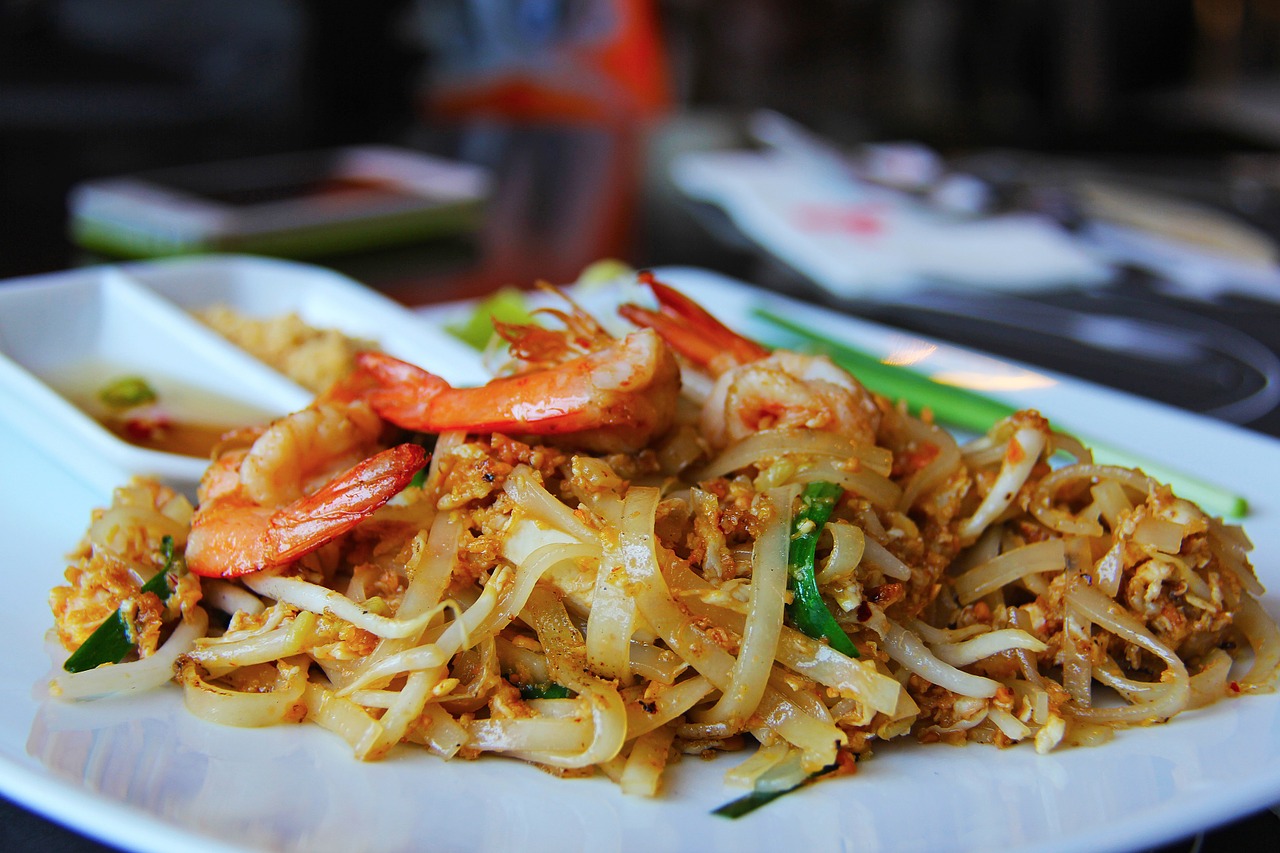
- Add basil leaves to boiling water before adding thai rice noodles or wheat noodles.
Khanom Jeen Recipe
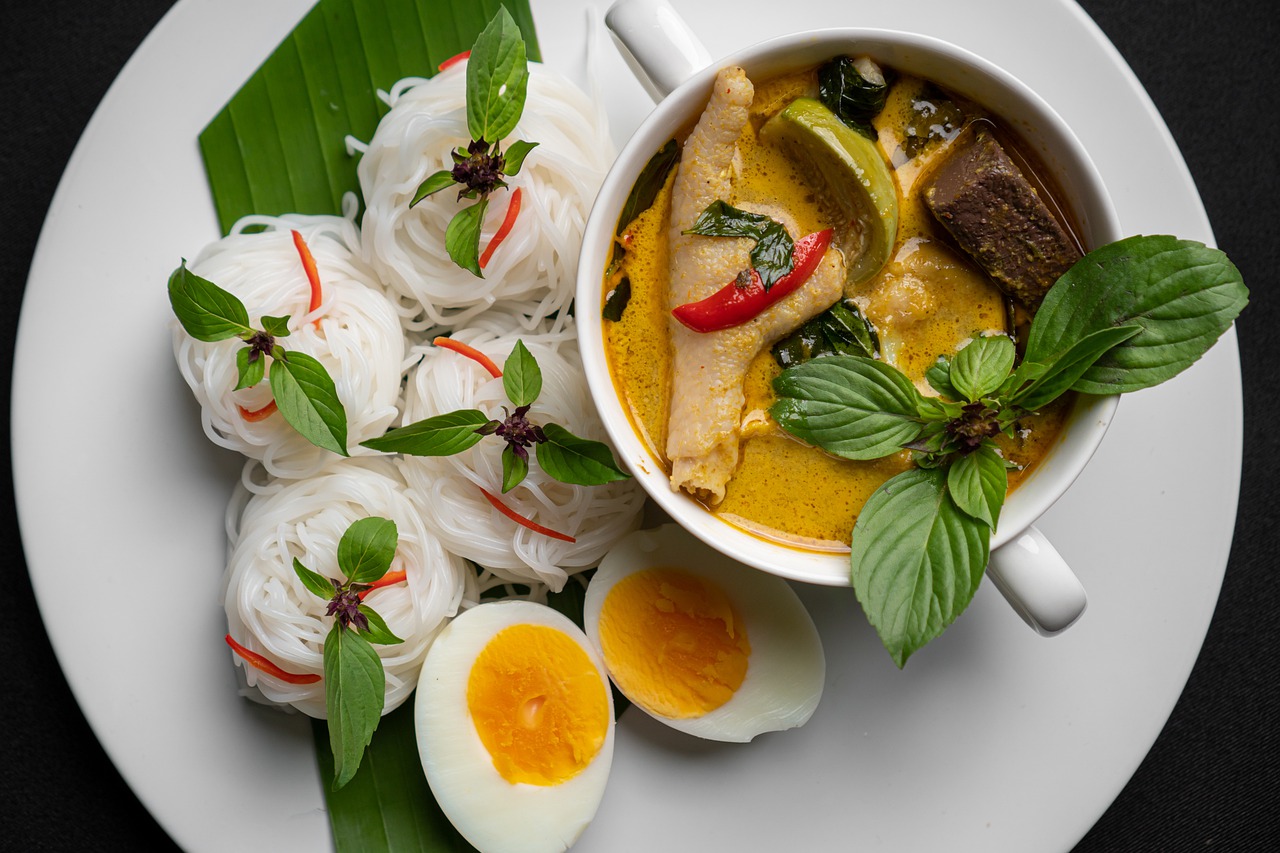
A Khanom Jeen is a rice noodles dish that usually contains coconut milk and thai basil as well as other ingredients such as egg. It originated in Thailand but has been adopted by many different countries including Laos for their traditional New Year’s Day meal.”
Recipes that use Thai Holy Basil
“Thai Basil is a versatile herb with many culinary uses.
In Thailand, this thai dish is usually served with fried rice noodles as well as vegetables such as mushrooms, okra, or tomatoes which are cooked in a pot of broth over high heat until they turn golden brown (the longer you cook them the softer they will become. Some of the popular recipes that use Thai basil are:
- Tom Yum soup
- Green curry recipes
- Panaeng Curry Recipes
- Pad Woon Sen Recipe
- Thaal Thoeng Sauce Recipe
- Pad Thai Recipe
- Khanom Jeen Recipe
- Thai Drunken Noodles
- Stir fry dishes with thai basil, such as chicken breast stir-fried in garlic and fresh leaves of thai basil plant.
Recipes that use Thai Basil but also have a variety of toppings: Pad Thai (Thailand’s national dish), Massaman curry, buttery scrambled eggs infused with thai basil for breakfast or brunch…the possibilities are endless!
This aromatic herb is also used in Vietnamese dishes and Cambodian recipes.
How to grow Thai Basil at home?
We hope that you have enjoyed this thai holy basil blog post. If you want to grow your own thai basil, it is a simple process as thais grow thai basil plants from seed and require little care but will take up space in your garden or on the sunny windowsill preferably without direct sunlight.”
You can also grow other basil varieties such as Thai Lemon Basil and holy basil.
Growing Tips for Thai Basil
- well-draining soil with a pH ranging from 6.5 to 7.5
- a thin layer of potting mixture in pots
- 6 to 8 hours of full sunlight per day
- keep the soil moist but not waterlogged
Thai Basil Vs Holy Basil
They are popular because each of them has certain distinctive qualities. To get the best from Thai basil and holy basil, you will need to understand those distinctive qualities.
- Thai basil and holy basil are related to each other and both are fixtures in Thai and other Southeast Asian cuisines.
- Holy basil belongs to the Ocimum tenuiflorum species while Thai basil belongs to the Ocimum basilicum.
- Both Thai and Holy basil, differently from the Genovese variety ( photo guide of Genovese Basil vs Thai Basil ) and they can last way longer.
- Thai basil presents distinctive purple stems that get more intense in color while it ages while holy basil has only green and hairy stems.
- Thai basil can have both purple and green ones (depending on the variety) while holy basil has only green leaves.
- Thai basil has a strong licorice sweet taste while holy basil presents a pepper flavor with a clove-like taste and a slightly bitter taste, which may be the basil Thai people love most.
- Thai basil has a purple stem, and like other plants in the mint family, the stem is square. Its leaves are opposite and decussate. It also has narrow leaves.
Frequently Asked Questions
Who can use Thai Holy Basil?
Answer: Thai Holy Basil has a fragrance that reminds me of an herb-scented spice cabinet. I find its flavor to be very minty, but still sweet and a little spicy at the same time.
Thai Holy Basil can be used by anyone who likes the above benefits that it offers! If you are looking for more specific information about using Thai Basil in recipes, feel free to reach out to us.
Can you grow holy basil from seeds?
Answer: Holy basil can be grown from seeds, but it is very slow.
If you plant it indoors after moistening the paper towel with water, sprinkle a few holy basil seeds over the wet paper towel and place the whole thing in a clear glass jar or small pot wide enough for sunlight to shine through. Make sure that there are at least four inches of water covering the seeds every day. If watered properly, you should see green sprouts within a week or two! They will eventually grow into tall plants that look like fig trees.
Can I grow basil in the shade?
Answer: Yes. Basil plants are very adaptable, so they can be grown in a wide range of conditions as long as they are provided with enough water and nutrients.
Basil prefers to grow in medium sunlight but will tolerate much less than is required for optimal growth (i.e., near shade). This means that should you plant basil plants indoors or outdoors, leaves may look pale because the amount of light received isn’t quite what the plant requires to maintain its newly green coloration. However, if given enough water and nutrients, basil will produce prolific green leaves that are generally larger than those obtained in full sun.
Where can you buy Thai Holy Basil?
Answer: Holy basil or Thai Holy Basil is easily available in any major Asian supermarket. It’s also usually stocked with other fresh herbs, so you should be able to find it without much trouble. We’ve found that things like Asian supermarkets are a good place to look if you have trouble locating them online!
In Western countries, if available in supermarkets, Thai basil leaves are generally sold at a higher price than the most common Genovese basil due to its well-known and more marketable medical properties.
How to cook with Thailand basil?
Answer: For the bold, Thai basil can be fried with bacon and other seasonings to make a pesto-like sauce. When making salad dressings, add Thai basil leaves to pretty much any recipe that calls for Italian or classic green sweet basil.
Basically anywhere you would use one of those varieties of basil (i.e., in soups and stews) it’s worth sneaking a handful of Thai basil into the mix. Don’t look for a “Thai” section at your grocery store though–you will find this on Asian store shelves near the cilantro and other herbs like mint, Vietnamese coriander, dill, lemongrass etcetera).
Can I replace Thai basil with Holy basil in my recipes?
Answer: One would certainly get something different, but you might not be happy with the taste given their different flavor!
Holy basil and Thai basil taste nothing alike. It is a common herb in India, Southeast Asia, and other tropical areas of East Asia. It has an interesting flavor that’s unlike anything else. I suppose you could use it as a substitute if your curry recipe was originally made with one of those two kinds of herbs – but I wouldn’t suggest just replacing it – let your mouth guide you instead to culinary bliss 🙂
Why is Thai Basil so popular in Thai food?
Answer: Thai basil has an intense, aromatic flavor that is perfect for the dishes of Thailand. It’s high in essential oils, which give it a light licorice taste and fragrance that most people find more flavorful than regular Basil. It also helps to balance the flavors of savory Southeast Asian dishes like Pad Thai or Tom Yum Soup.
How does Thai Basil affect you when working out and after exercising?
Answer: There are many benefits, including combating fatigue and increasing the ability to concentrate. Thai basil may also help detoxify the body because it’s thought to have antibacterial properties. While there haven’t been any definitive studies on this particular anecdote, many people find that it helps them feel more alert after completing the exercise.
Is there any difference in taste or flavor between Thai holy basil and ordinary basil?
Answer: Yes. Thai holy basil has a more peppery or spicy flavor, whereas regular basil has more of a milder clove-like flavor.
But mostly the difference is in the leaves themselves as Thai Holy Basil’s are green/purple and regular Basil’s are drab brownish-yellow without any streaks of purple to them.
You could say that they have different personalities. That said, I tend towards using Thai but if it’s just for cooking I’ll use what I find on hand or what is cheapest. All beets are red, but some beets taste better than others 😉
How do you prepare Thai Holy Basil for consumption?
Answer: Holy basil has a very strong taste that seeps into its surroundings. Oregano, any spices in the dish you are cooking, and of course your hands all end up tasting it after chopping or washing the leaves. For this reason, many cooks prefer to make a Thai Holy Basil dipping sauce so that those who don’t enjoy the flavor can dip whatever they want into it.
Why do many people confuse it with Thai Sweet Basil?
Answer: From what I have heard, this is true.
Most people don’t know the difference, but that’s because most people are careless with the culinary details as we are all busy. You’re actually looking for Thai Holy Basil if you want to use it in cooking. The Thai sweet basil has a much more milder aroma and flavor and works great substituted if that’s the only one you can find at your store!
Summary
If you’re looking for a new and exciting herb to try, thai holy basil should be on your list of culinary options. It is used in many Thai dishes that are popular throughout the world such as Tom Yum soup or Pad Ka-Prao. You may even find it at your local grocery store! Give this flavorful herb a shot today!

